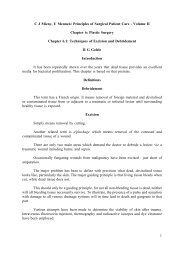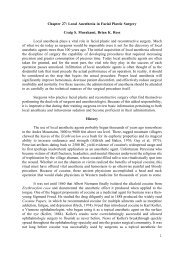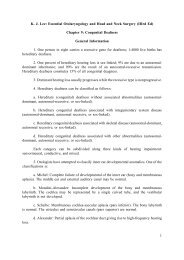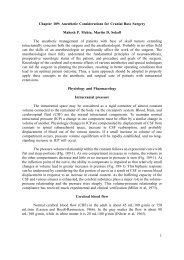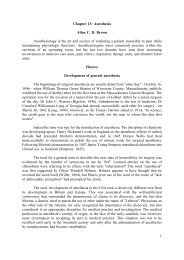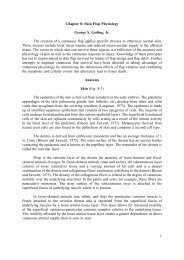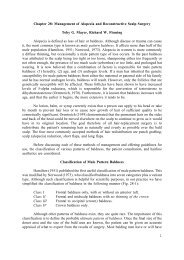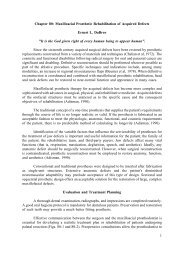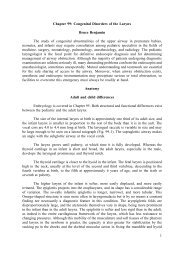Create successful ePaper yourself
Turn your PDF publications into a flip-book with our unique Google optimized e-Paper software.
the mouth. If no movement occurs, sectioning below the clamp after it is closed will preventinjury to the mandibular branch of the facial nerve.c. Ptosis of the submaxillary glands may be accentuated and increased by completehorizontal sectioning of the platysma muscle.d. Plication of the medial borders of the platysma muscle with a permanent buriedsuture will not only give support to the submental area but will prevent the hollowed-outappearance in the submental area whn a submental lipectomy has been done.5. Class V neck is the patient with acquired retrognathia or congenital microgenia whoneeds a chin implant at the same time as the cervical facial rhytidectomy.a. The implant may be placed through the submental incision.b. The increase in projection of the pognion will greatly enhance the postoperativecosmetic result and the cervicomental contour.6. Class VI is the patient with a low-lying hyoid bone.a. Ideally the hyoid bone should lie at or above the fourth cervical vertebra.b. Preoperative identification of this patient will enhance preoperative counseling towarn the patient of a less-than-optimum postoperative cervicomental contour.C. Patients who are heavy smokers should have a conservative operation as they tendto bleed, heal poorly, and are susceptible to skin slough.D. The facelift operation will improve the lower third of the face and upper one-halfof the neck. It will not improve the nasolabial fold area.Operative TechniqueA. The facelift operation is basically divided into four flaps: temporal, preauricular,cervical, and postauricular.1. These flaps are at different levels with temporal and occipital flaps being deep topreserve the hair follicles while the preauricular and cervical flaps are superficial to theSMAS.B. The danger zone are where vital structures may be injured.1. The zygomaticotemporal branch of the facial nerve begins to run very superficiallyover the zygomatic arch and runs in a line from 0.5 cm below the tragus diagonally to a point1.5 cm lateral to the eyebrow.a. Elevation of the temporal flap anterior to the hairline must be deep to the frontalismuscle and on top of the periosteum to avoid injury to the superficial level of the temporal24




